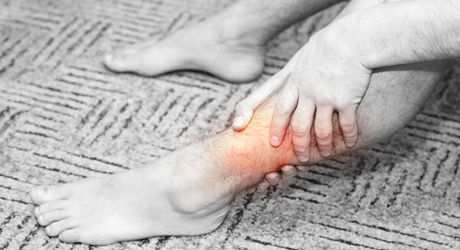Compartment Syndrome
Compartment syndrome is a painful condition that occurs when pressure within the muscles builds to dangerous levels. This pressure can decrease blood flow, which prevents nourishment and oxygen from reaching nerve and muscle cells.
Compartment syndrome can be either acute (having severe symptoms for a short period of time) or chronic (long-lasting).
Acute compartment syndrome is a medical emergency. It is usually caused by a severe injury and is extremely painful. Without treatment, it can lead to permanent muscle damage.
Chronic compartment syndrome, also known as exertional compartment syndrome, is usually not a medical emergency. It is most often caused by athletic exertion and is reversible with rest.
How Compartment Syndrome Develops
Compartments are groupings of muscles, nerves, and blood vessels in your arms and legs. Covering these tissues is a tough membrane called a fascia. The role of the fascia is to keep the tissues in place, and, therefore, the fascia does not stretch or expand easily.
Compartment syndrome develops when swelling or bleeding occurs within a compartment. Because the fascia does not stretch, this can cause increased pressure on the capillaries, nerves, and muscles in the compartment. Blood flow to muscle and nerve cells is disrupted. Without a steady supply of oxygen and nutrients, nerve and muscle cells can be damaged.
In acute compartment syndrome, unless the pressure is relieved quickly, permanent disability and tissue death may result. This does not usually happen in chronic compartment syndrome.
Compartment syndrome most often occurs in the anterior (front) compartment of the lower leg (calf). It can also occur in other compartments in the leg, including the thigh, as well as in the arms, hands, feet, and buttocks.
Acute compartment syndrome usually develops after a severe injury, such as a car accident or a broken bone. Rarely, it develops after a relatively minor injury.
Conditions that may bring on acute compartment syndrome
- A fracture
- A badly bruised muscle. This type of injury can occur when a motorcycle falls on the leg of the rider, or a football player is hit in the leg by another player’s helmet. It can also happen after overly vigorous exercise that causes muscle tissue to break down (rhabdomyolysis)
- Reestablished blood flow after blocked circulation. This may occur after a surgeon repairs a damaged blood vessel that has been blocked for several hours. A blood vessel can also be blocked during sleep. Lying for too long in a position that blocks a blood vessel, then moving or waking up can cause this condition. Most healthy people will naturally move when blood flow to a limb is blocked during sleep. The development of compartment syndrome in this manner usually occurs in people whose brain function is impaired. This can happen after severe intoxication with alcohol or other drugs.
- Crush injuries.
- Anabolic steroid use. Taking steroids is a possible factor in compartment syndrome.
- Constricting bandages. Casts and tight bandages may lead to compartment syndrome. If symptoms of compartment syndrome develop, remove or loosen any constricting bandages. If you have a cast, contact your doctor immediately.
Development of Chronic Compartment Syndrome
The pain and swelling of chronic compartment syndrome is caused by exercise. People who participate in activities with repetitive motions, such as running or marching, are more likely to develop chronic compartment syndrome. This is usually relieved by discontinuing the exercise and remedial massage, and is usually not dangerous.
Signs and Symptoms of Acute Compartment Syndrome
The classic sign of acute compartment syndrome is severe pain, especially when the muscle within the compartment is stretched.
- The pain is more intense than what would be expected from the injury itself. Using or stretching the involved muscles increases the pain.
- There may also be tingling or burning sensations (paresthesia) in the skin.
- The muscle may feel tight or full.
- Numbness or paralysis are late signs of compartment syndrome. This usually indicates permanent tissue injury.
- Difficulty moving the foot, sometimes with a sense of the foot slapping downward when running
- Visible muscle bulging
Chronic Compartment Syndrome and Remedial Massage:
Remedial Massage can be effective in treating Chronic Compartment Syndrome and helping to prevent Compartment Syndrome. Remedial massage can help to relieve muscle tension in the affected area. As a result, the strain on the tendons connecting to the compartment’s bone is reduced, allowing it to heal. It also keeps the condition from reoccurring after you return to your sport.






